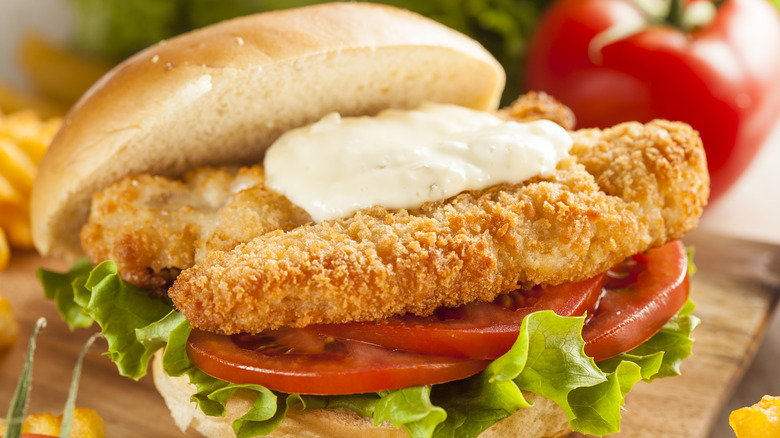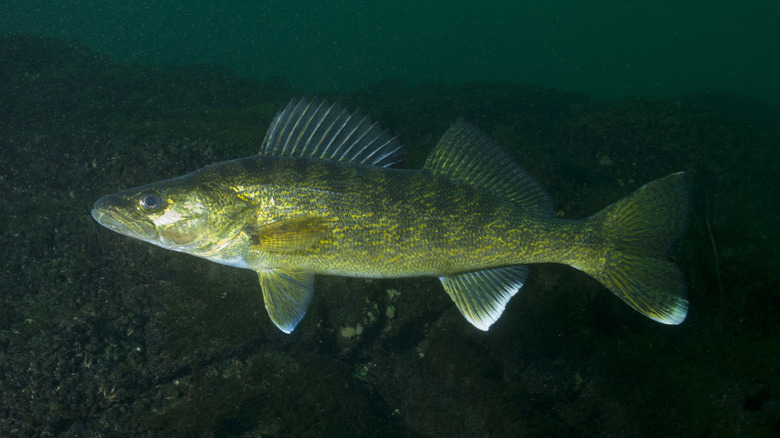Minnesota's State Fish Is Delicious, But At Risk
When foodies think about Minnesota's underrated food scene, classic egg coffee or the SPAM museum might come to mind. But if you've ever chowed down on a fried fish sandwich or a basket of fish and chips in a Great Lakes town, then you know where the real scene is. On the Great Lakes, fishing is a year-round sport,and in Minnesota, walleye are so symbolic of the local angler scene that both Garrison and Baudette claim their towns as the "Walleye Capital of the World."
In 1959, a massive roadside statue of "Willie the Walleye" was constructed on Baudette's Main Street in homage to the state fish. In 2018, the original Willie was torn down and replaced by an even larger revamped fiberglass mascot weighing two tons and spanning 40 feet in length. In short, walleye is a big deal in Minnesota, but its popularity has gotten the fish into some pretty deep water, and it might not be available forever if overfishing continues.
Lake Superior's cool freshwater habitat is ideal for walleye, which thrive in low temperatures and are sensitive to sunlight. Once caught, walleye are prized for their thick, flaky, white filets, which are meaty and not overly fishy. It's also wildly versatile, able to be breaded, fried, grilled, baked, broiled, poached, chowdered, and more. It's no mystery why walleye has been Minnesota's state fish since 1965. But, in the years since, walleye has also become the most sought-after recreational game fish in the state — and now, it's overfished and at risk.
Stricter fishing regulations help protect Minnesota's prized walleye population
This population dropoff has been a long time coming. A report from the Great Lakes Fishery Commission detailing the walleye population of the Great Lakes from 1800-1975 explained, "The walleye populations of Lake Superior have always been relatively small and widely scattered, primarily because the amount of shallow, warm-water habitat is limited." Overfishing threats to the already-limited walleye population have been decades in the making. "After a peak yield of 170 tons in 1966, the harvest dropped rapidly to nil in 1972," the report expounds. It ultimately concludes, "Overexploitation led to the demise of the [Lake Superior] Black Bay population."
Fast forward 50 years, and the issue has bloomed into a weakened food web at large. As perch and tullibee populations decline, walleye consequently swim in shallower waters than normal to seek fish to eat — making them easier to catch and worsening the overfishing issue.
Luckily, in March 2024, the Department of Natural Resources set stricter open water fishing regulations for Minnesota's Mille Lacs Lake, a famous walleye hot spot for anglers. Per the ruling, all walleye in Mille Lacs Lake "will be catch-and-release during the spring and early summer of 2024, with the opportunity to harvest a walleye starting on Friday, August 16." In addition to this smaller harvest window, once the fishing season begins, fishermen will only be legally permitted to keep "one walleye that is 21-23 inches in length or that is greater than 28 inches."

